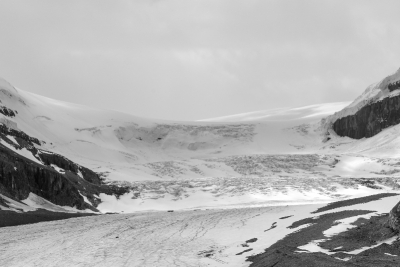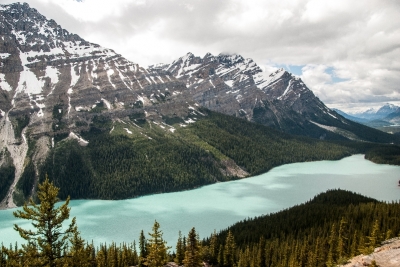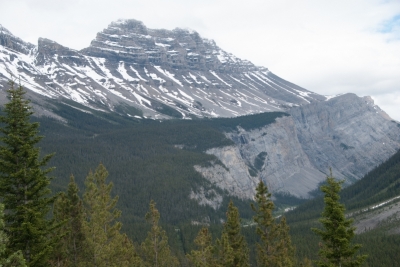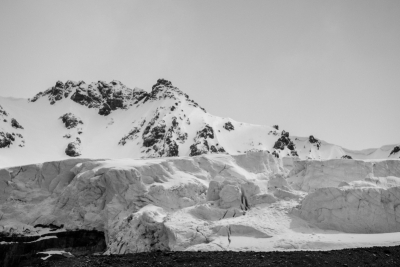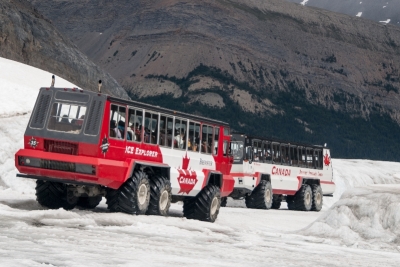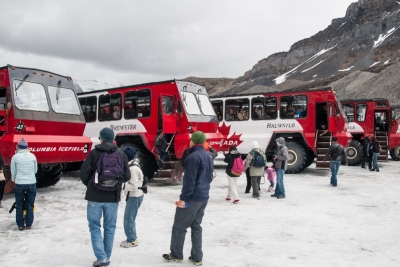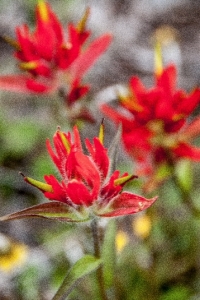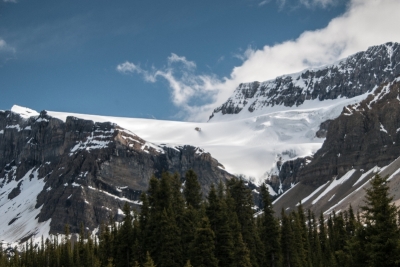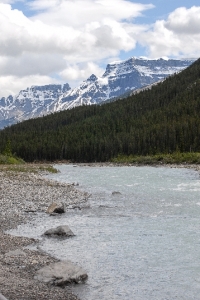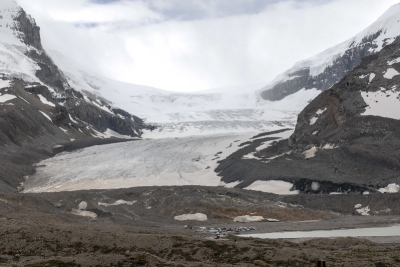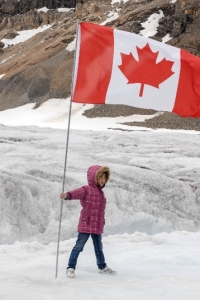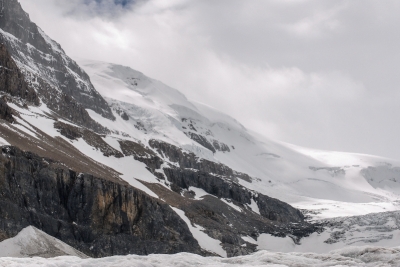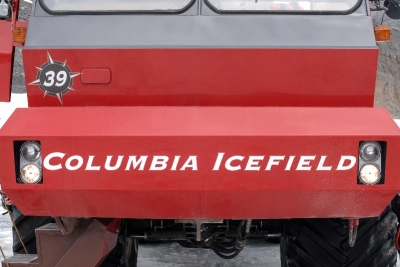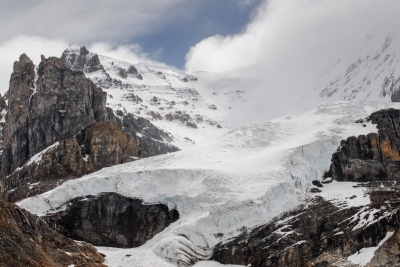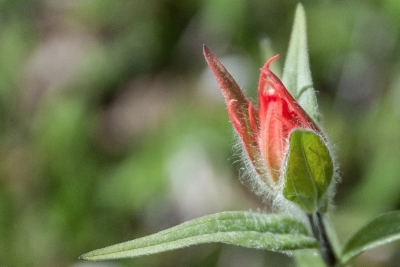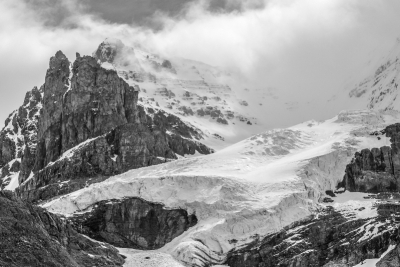National Geographic ranks the drive between Banff and Jasper National Park on the Ice fields Parkway as one of the best 10 drives in the world. It could have been easily labeled highway to heaven, it is so filled with spectacular scenery. There are 22 ice fields (glaciers) along the 79 miles of the Canadian Rockies, and you can see more than half of them from the Ice fields Parkway.
At one point we visited the Columbia Ice field, and the Athabasca Glacier. We took the buses with those large tundra tires and drove to the brink of the land that time forgot. Glaciers that were hundreds of years old — thousands of years in the many kilometers of ice that are found compressed thickly, beneath the surface. They didn’t let you wander too far, there are crevasse that you could fall into, and we left our crampons at home, but it was enough to see the power of mother nature. This huge glacier will be gone in 80 years based on the current rate of melting.
We hiked up to Peyto Lake, Peyto was an early mountain guide, who, after he got all the “tourists” settled down, would move himself over to this lake, since the campsite he set up was too crowded. This is a great place to call your own, the color of the lake really is turquoise green. It is caused by glacial flour, a fine-grained, silt-sized particles of rock, generated by mechanical grinding of bedrock by glacial erosion. Because the material is very small, it becomes suspended in river water making the water appear cloudy, which is sometimes known as glacial. If the river flows into a glacial lake, the lake appears turquoise.

